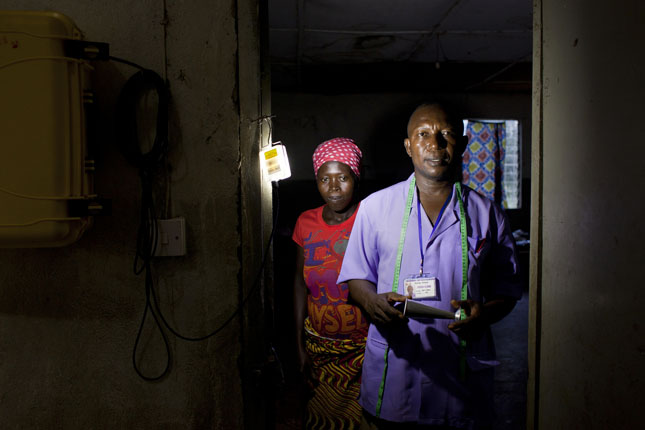-
Better Training and Support for Midwives Is Saving Women’s Lives
October 20, 2015 By Sandeep Bathala
The feats that pregnant women perform under some of the most rudimentary conditions are sometimes unimaginable.
On the first day of the Global Maternal and Newborn Health Conference being held this week in Mexico City I heard the story of a 23-year-old woman in her third trimester in Maharashtra, India, who traveled 45 kilometers from her rural home to seek medical care. Her whole body was swollen and she had not passed urine for a day. When she arrived at the health center the physician was still 30 minutes away. What would be her fate?
In a room full of maternal and newborn health experts from around the world (there are more than a thousand people at this conference in total), I learned that she survived because training provided to a midwife at the facility by Jhpiego, a non-profit affiliated with Johns Hopkins University.
The midwife immediately identified her symptoms as severe pre-eclampsia, a potentially fatal condition, and began treatment.
On-site supervision, mentoring, and auditing
Bijali Sinha, a program officer for Jhpiego Mumbai, described Jhpiego and the Government of Maharashtra’s efforts, with support from the John D. and Catherine T. MacArthur Foundation, to improve the quality of care in select labor rooms since 2013. They specifically target certain midwifery competencies to enable the provision of high-quality, respectful intra- and post-partum services. Structured and focused clinical standardization workshops for midwives are followed by mentoring visits which help ensure they are using their newfound skills properly.
To date, 365 labor room staff members have been trained. Three hundred subsequently received hands-on mentoring, which helps improve quality of care – a major issue in many countries – and some received a third round of short, need-based onsite trainings for skill correction.
Sunday Dominico, clinical director of the World Lung Foundation (WLF) which also does a great deal of work on maternal and child health in low-income countries, discussed the foundation’s partnership with the NGO EngenderHealth and the government of Tanzania to provide similar on-site supervision, mentoring, and auditing for non-physician clinicians.
The support package includes weekly conference calls led by WLF obstetricians and anesthesiologists to discuss complicated cases, health systems management issues, successes, and frustrations. In addition, there’s an emergency call system that non-physicians can use to contact WLF obstetricians at any time. More than 100 emergency calls have already been received since 2013.
These efforts to improve the skills of non-physicians and provide them with a support network are saving lives. According to a Centers for Disease Control and Prevention evaluation, approximately 130 maternal lives were saved in WLF facilities in 2011 and 2012, said Dominico.
Building the competence and confidence of midwives and non-physician clinicians will accelerate momentum for maternal and newborn health in the newly adopted Sustainable Development Goals and hopefully put us on a track to end all preventable maternal and newborn deaths.
I look forward to hearing about more high quality maternal and newborn health services in the coming days. Stay tuned for additional reports from the conference.
Sandeep Bathala is reporting from 2015 Global Maternal and Newborn Health Conference in Mexico City for the Wilson Center, Maternal Health Task Force, and UN Population Fund. To read what global maternal health leaders are saying about the conference and what we need to do to end preventable maternal and newborn mortality, check out the Crowd 360 digital hub and subscribe to the conference Daily Digest.
Photo Credit: A male midwife student in training in Sierra Leone, courtesy of the H4+ Partnership.
Topics: development, Dot-Mom, featured, From Mexico City, global health, India, maternal health, midwives, poverty, respectful care, SDGs, South Asia, Tanzania
 A Publication of the Stimson Center.
A Publication of the Stimson Center.



